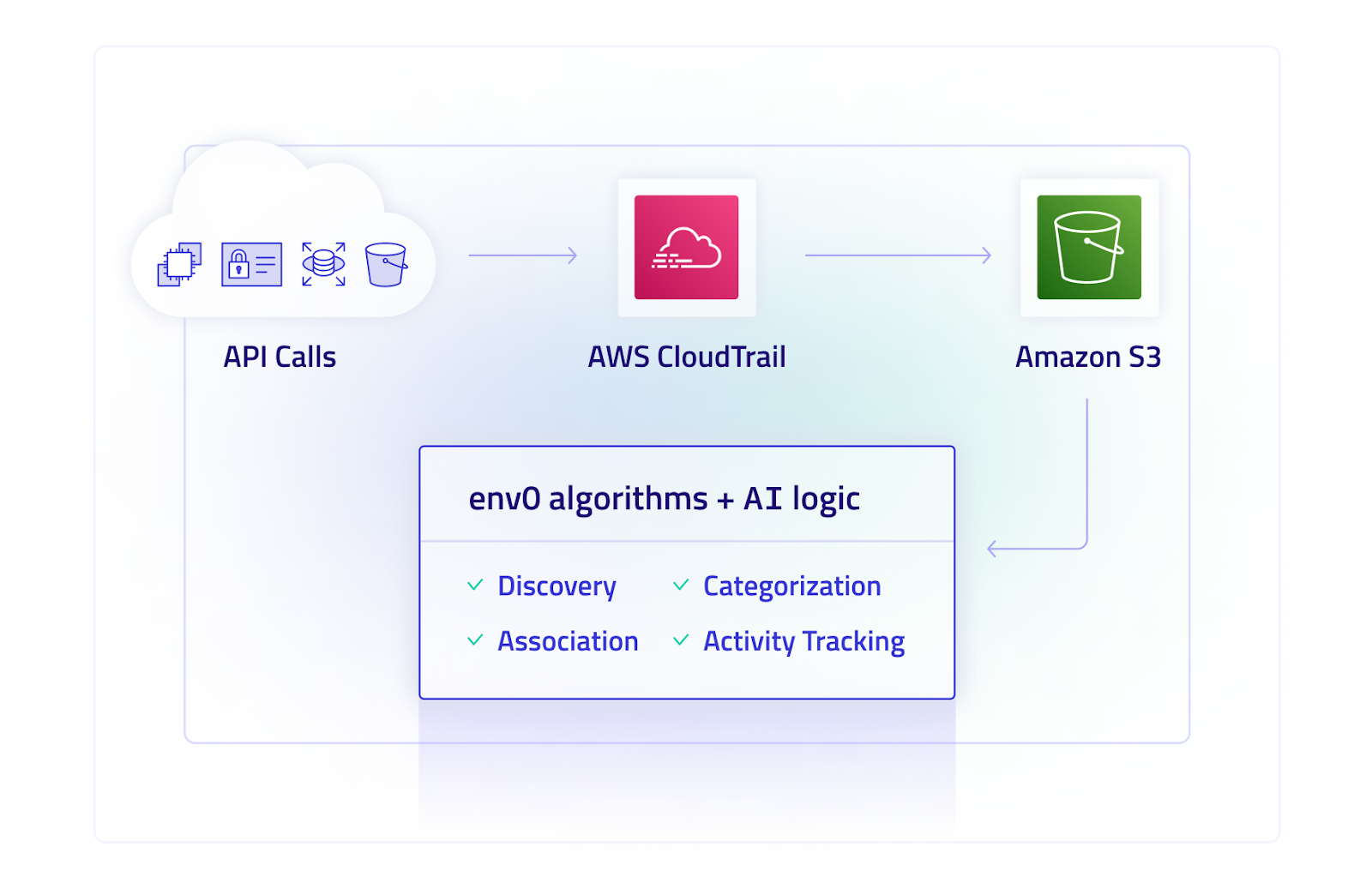Supercharging IaC With AI for Next-Gen Infrastructure Efficiency
In today’s technology landscape, it’s hard to overlook the impact AI is having across nearly every domain. As Infrastructure as Code (IaC) enthusiasts, we’ve been exploring how AI can drive the next evolution of the IaC ecosystem.
 In today’s technology landscape, it’s hard to overlook the impact AI is having across nearly every domain. As Infrastructure as Code (IaC) enthusiasts, we’ve been exploring how AI can drive the next evolution of the IaC ecosystem.
In today’s technology landscape, it’s hard to overlook the impact AI is having across nearly every domain. As Infrastructure as Code (IaC) enthusiasts, we’ve been exploring how AI can drive the next evolution of the IaC ecosystem.
As we have already seen, AI is playing a significant role in enhancing DevOps and platform capabilities, and it has become clear that AI will be central to the future of IaC practices. Below, we’ll explore some important areas where AI is reshaping IaC operations and discuss what the future may hold.
Writing and Maintaining IaC
The rise of IaC has greatly improved infrastructure efficiency and self-service capabilities for developers. However, the growing complexity of writing infrastructure code — whether YAML, JSON, or HCL — has led to challenges.
Despite advancements with tools like Pulumi and AWS CDK, which allow developers to write IaC using general-purpose programming languages, writing thousands of lines of IaC code can be overwhelming. This friction has prompted many engineering organizations to form dedicated DevOps and platform teams to master the process.
However, over time, these teams have become bottlenecks in deployment, slowing infrastructure provisioning and software delivery. AI tools like GitHub Copilot are revolutionizing how developers write and maintain application code. These tools use machine learning models trained on vast datasets to provide intelligent code suggestions and autocompletion.
For instance, when writing a function or method, Copilot can predict the next lines, suggest entire code blocks, and correct syntax errors on the fly. This not only speeds up development but also helps maintain code quality by enforcing best practices.
The same principles apply to IaC, where AI can assist in writing configurations for frameworks like Terraform, OpenTofu, CloudFormation, and Pulumi. For example, when defining an AWS S3 bucket with OpenTofu, AI tools can suggest optimal configurations for bucket policies, versioning, and lifecycle rules based on industry best practices.
Similarly, when using Pulumi with TypeScript, AI can recommend appropriate resource configurations, manage dependencies between resources, and ensure adherence to organizational standards.
AI models, trained on large volumes of IaC code, can identify areas for improvement, such as refactoring repetitive code into reusable modules for efficiency and consistency. For instance, if EC2 instances with similar configurations are regularly set up across projects, AI can suggest creating a module to encapsulate the setup, reducing duplication and the potential for errors.
AI also aids in maintaining consistency and governance at scale. By defining and enforcing policies based on industry best practices, AI helps organizations ensure compliance and security, particularly for large and complex infrastructures. This reduces the need to "reinvent the wheel" and streamlines infrastructure management.
Automated Testing for IaC
Much like writing IaC, developers often dislike writing tests for their code. Good IaC hygiene requires that infrastructure code be treated similarly to software code, and testing is a critical element in ensuring quality.
Recent developments, such as the introduction of testing features in OpenTofu and Terraform (version 1.6), pave the way for AI’s role in IaC testing. AI-powered testing tools like CodiumAI, Tabnine, and Parasoft have already demonstrated significant value in software development, and this trend is now extending to IaC.
AI assistants can help developers by automating the generation of tests for both new and existing IaC code. This reduces the time and effort required to create tests manually, enabling faster implementation of testing frameworks within IaC tools. AI-driven testing will ultimately simplify the process, leading to improved IaC quality over time.
Additionally, AI’s integration with Integrated Development Environments (IDEs) makes auto-test generation more accessible. Tools like Copilot and Tabnine work seamlessly within developers’ preferred environments, offering suggestions and improvements directly in the workflow.
Advanced IaC management tools can support developer-optimized capabilities, with the ability to import resources directly into IDEs, streamlining development and infrastructure management without the need for additional tools.
Observability for IaC With AI
As modern systems grow in scale and complexity, infrastructure observability — particularly in cloud environments — becomes increasingly important. A notable example is GitLab’s two-hour outage caused by an outdated production configuration, highlighting the need for robust IaC practices and real-time monitoring to prevent configuration drift.
In multi-cloud operations, managing cloud assets and resources at scale is uniquely challenging. AI can help by providing visibility into cloud management and analyzing the extent to which infrastructure is managed through IaC, APIs, or manual ClickOps (which should be migrated to IaC where possible). AI can also classify actions, optimize resource management, and enforce AI-defined policies related to tagging, compliance, security, access controls, and cost optimizations.
AI’s role in observability extends beyond infrastructure management. By analyzing signals from vast amounts of log data on platforms like Datadog, Logz.io, and Sumo Logic, AI can identify patterns and anomalies that help optimize system performance, troubleshoot issues, and prevent outages. This capability is particularly useful for IaC, as AI can detect unusual behavior and respond to ensure infrastructure remains secure and efficient.
For example, in our platform, AI is already used for nuanced analysis of CloudTrail payloads, which allows for the uncovering of patterns in large datasets that would otherwise be difficult to detect. This, in turn, enables quick identification of anomalies and IaC coverage gaps, reporting back on potential risks and cost-saving opportunities, such as retiring idle resources.
Using CloudTrail for IaC Coverage and Risk Analysis
AI for IaC: Beyond the Hype
AI is more than just a buzzword — it’s a powerful tool that’s already enhancing many engineering domains, including IaC, and the current advancements we’re seeing are only the beginning.
Looking ahead, AI will play an increasingly important role in areas such as code generation, automated testing, anomaly detection, policy enforcement, and cloud observability. By integrating AI into IaC workflows, organizations can achieve greater efficiency, security, and cost-effectiveness, laying the foundation for more advanced and scalable cloud infrastructure.
The future of IaC isn’t just about writing better code: it’s about harnessing AI to drive innovation and propel the next wave of infrastructure and cloud management.
The above is the detailed content of Supercharging IaC With AI for Next-Gen Infrastructure Efficiency. For more information, please follow other related articles on the PHP Chinese website!

Hot AI Tools

Undresser.AI Undress
AI-powered app for creating realistic nude photos

AI Clothes Remover
Online AI tool for removing clothes from photos.

Undress AI Tool
Undress images for free

Clothoff.io
AI clothes remover

Video Face Swap
Swap faces in any video effortlessly with our completely free AI face swap tool!

Hot Article

Hot Tools

Notepad++7.3.1
Easy-to-use and free code editor

SublimeText3 Chinese version
Chinese version, very easy to use

Zend Studio 13.0.1
Powerful PHP integrated development environment

Dreamweaver CS6
Visual web development tools

SublimeText3 Mac version
God-level code editing software (SublimeText3)

Hot Topics
 1664
1664
 14
14
 1421
1421
 52
52
 1315
1315
 25
25
 1266
1266
 29
29
 1239
1239
 24
24


